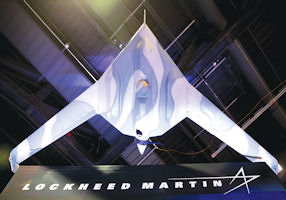Over the next several years Southern California has an opportunity to once again be at the forefront of a new chapter in aviation history. Congress has ordered the Federal Aviation Administration to develop policies and procedures to allow unmanned aerial systems, or drones, to fly in the skies safely with manned airplanes by 2015. To do that, the FAA released the Screening Information Request to select six test sites around the country to help develop the procedures for safe integration of drones into the national airspace. This means having procedures for filing flight plans, ensuring the unmanned systems are air worthy and having safety procedures in place should the drones lose contact with their remote pilots. Many states across the country are vying to be selected as one of the test sites, a decision the FAA will make by the end of the year. Some have allocated millions of dollars to insure their success. In California, there is no formal state effort for this economic development opportunity. Therefore, a regional coalition and collaboration of local government, academia and the private sector has developed a competitive proposal. If selected as a test sight, the Southern California region would once again be at the epicenter of a new aerospace enterprise that will bring millions, if not billions, of dollars in economic activity while creating high-tech, high paying jobs. Southern California is home to many major leaders in the aerospace industry. AeroVironment Inc., Boeing Co., General Atomics, Lockheed Martin Corp. and Northrop Grumman Corp. among many others, all have facilities in the region involved in drone manufacturing and related technologies. Each has its own system of suppliers and vendors. They are all anxiously awaiting the integration of drones into the national airspace. As a new industry evolves to meet government and commercial demand, new jobs, new facilities, new equipment, innovative technologies and an educated workforce will be required. Sensors, cameras, software and other new technologies will have to be developed or tested. Many other industries are anticipating the commercialization of drones for civilian use. Some examples of how they would be used include wildfire detection, pollution monitoring, event security, traffic monitoring, disaster relief, fisheries management, oil and gas pipeline monitoring, storm tracking, remote aerial mapping and transmission line inspection. Think about the Internet in its infancy and where it is today as a commercial enterprise. The commercialization of drones will likely follow a similar economic and innovative trajectory. FAA Administrator Michael P. Huerta believes drone commercialization is one of the most dynamic growth sectors of the aerospace industry and could generate nearly $90 billion in worldwide economic activity in the next decade. Last March, the Association of Unmanned Vehicle Systems International released a study that found that in the first three years of commercial drone integration, 70,000 jobs will be created nationally, while in the first decade integration will generate $82 billion in economic activity and $482 million in state tax revenues. That is why it is critical this area be chosen as a test site, especially given defense cuts that will further erode Southern California’s aerospace industry. The County of Ventura and Ventura County Economic Development Association have created the Southern California Unmanned Systems Alliance in response to the FAA screening request. This alliance is intended to leverage the region’s advanced military and private sector aerospace capabilities in the creation of a new industry. The local test site would operate from the Camarillo Airport and collaborate with other partner airports from as far north as Redding and Truckee and as far south as Lancaster and Victorville that will serve as launch and recovery sites. Additionally, the local test site will have access to restricted military airspace for testing and evaluation. The strength of our proposal is based not only on technological and aviation capabilities but also on the strength of the team that is brought together. Southern California’s advanced military and private sector aerospace capabilities and workforce are unparalleled in the world. Among members of the alliance are California State University Channel Islands; California Lutheran University; the University of California at Santa Barbara School of Engineering; the Jet Propulsion Laboratory at Cal Tech, AeroVironment; the Center for Asymmetric Warfare at Point Mugu; and the Mojave Air and Space Port. The commercialization of drones will happen, creating new economic growth in manufacturing and related sensor and imaging technologies. We believe that Southern California, with our military and aerospace infrastructure, workforce and technological resources can and should be a leader in this emerging economic development opportunity. We believe the FAA will agree and award California one of the test sites. Bill Buratto is president and chief executive of the Ventura County Economic Development Association, a non-profit economic advocacy group.
